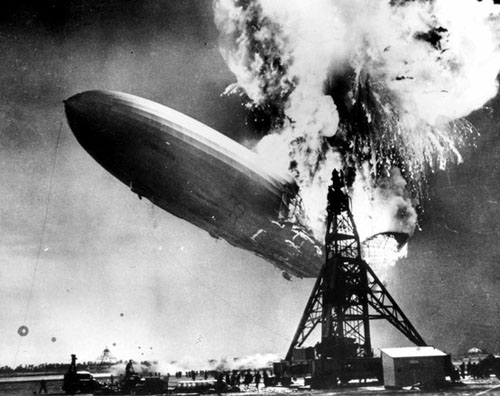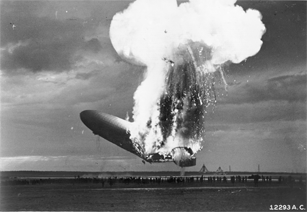Download PDF
RCA TRAINING
Root Cause Analysis training by Sologic provides the tools, skills, and knowledge necessary to solve complex problems in any sector, within any discipline, and of any scale. Learn MoreSOFTWARE
Sologic’s Causelink has the right root cause analysis software product for you and your organization. Single users may choose to install the software locally or utilize the cloud. Our flagship Enterprise-scale software is delivered On Premise or as SaaS in the cloud. Learn More The Hindenburg disaster is one of the best-known disasters of the 20th century. Film crews captured virtually the entire event (except the ignition!). And the dramatic images, along with the classic narrative ("Oh the humanity!") are so compelling that generations later, we still cannot look away. Therefore it's a perfect example for a root cause analysis!
The Hindenburg disaster is one of the best-known disasters of the 20th century. Film crews captured virtually the entire event (except the ignition!). And the dramatic images, along with the classic narrative ("Oh the humanity!") are so compelling that generations later, we still cannot look away. Therefore it's a perfect example for a root cause analysis!On May 6, 1937, at approximately 7:25PM, the German airship Hindenburg (D-LZ129) caught fire and crashed while attempting to dock at Naval Air Station Lakehurst, in Manchester Township, New Jersey (USA). Of the 97 crew and passengers, 35 lost their lives and many others were severely injured. One person on the ground was killed. The entire event was over within 40 seconds, although diesel fuel from the engines continued to burn for some time afterwards.
Most of the fatalities and injuries were caused by burns. However some were killed/injured when they jumped from the airship while it was still airborne. One grounds person was killed by falling debris. The burns were caused by a massive fire that quickly consumed the entire airship. The Hindenburg used hydrogen to provide lift. Hydrogen is highly flammable, but only in the presence of oxygen. Oxygen and hydrogen were able to mix because of the loss of integrity of the protective outer skin of the airship. This skin was made from cloth that was coated in "dope," which was made from iron oxide and aluminum-impregnated cellulose acetate butyrate - a highly flammable substance. Once the skin caught fire, it burned very rapidly, exposing the internal hydrogen cells. The entire volume of hydrogen and most of the skin was completely consumed within 40 seconds.
 Hindenburg example problemHow the skin ignited remains an open question. The most accepted theory is that static electricity built up from travel through local thunderstorms. It is also believed that the static charges existed at varying levels in different sections of the airship. There could have been a difference in electrical potential between skin panels, or between the skin and the internal metal frame. It is known that static management was an issue with airships of this type. It is unknowable though what actually initiated the spark.
Hindenburg example problemHow the skin ignited remains an open question. The most accepted theory is that static electricity built up from travel through local thunderstorms. It is also believed that the static charges existed at varying levels in different sections of the airship. There could have been a difference in electrical potential between skin panels, or between the skin and the internal metal frame. It is known that static management was an issue with airships of this type. It is unknowable though what actually initiated the spark.The skin is flammable, but it had to catch fire somehow. It is theorized that the most likely source was venting hydrogen gas ignited by a spark from static discharge. Other theories include a lightning strike, sabotage, and a backfiring engine. Sabotage and the backfiring engine were ruled out as being highly unlikely.